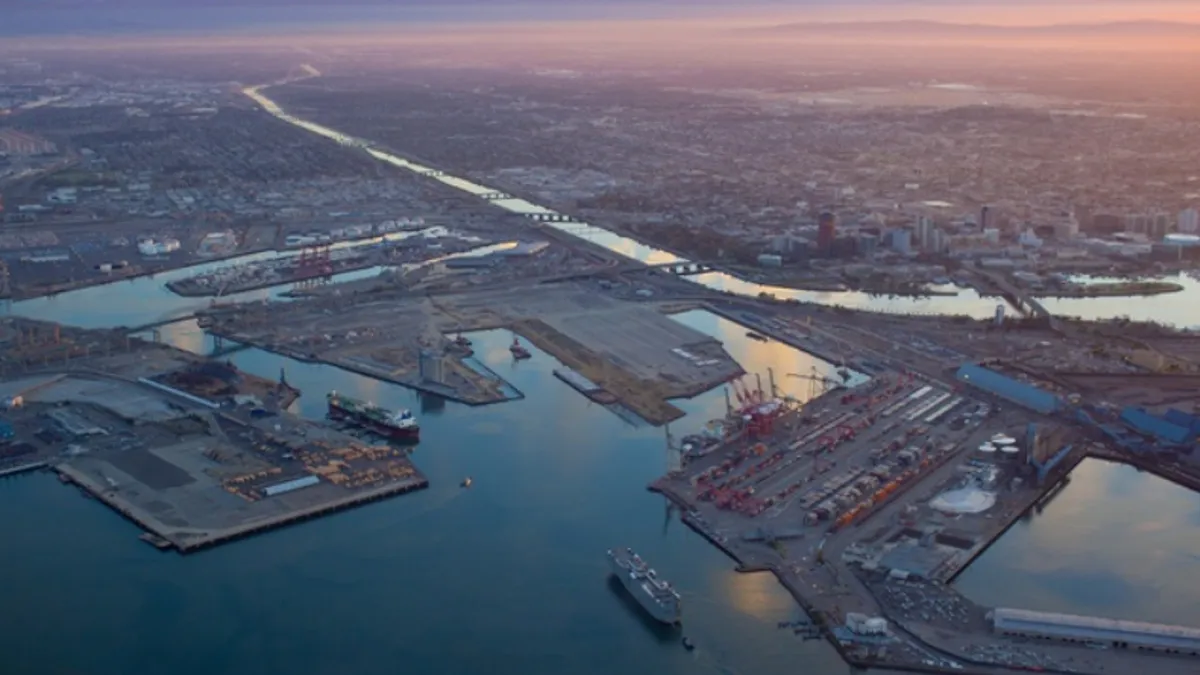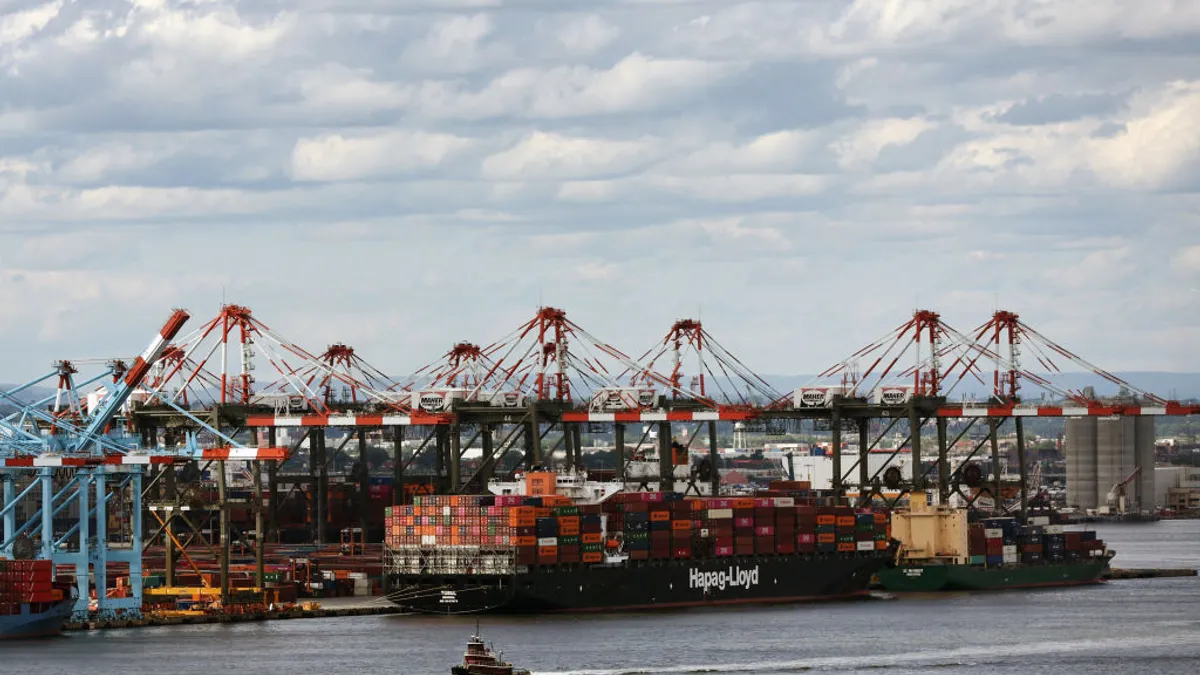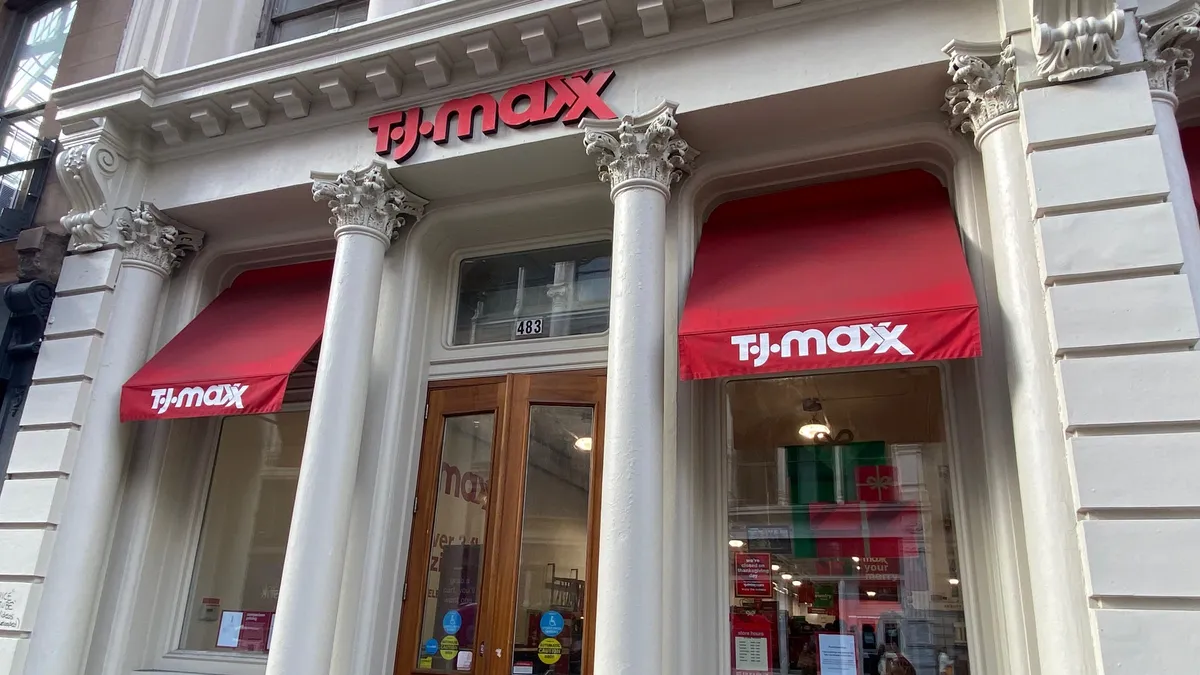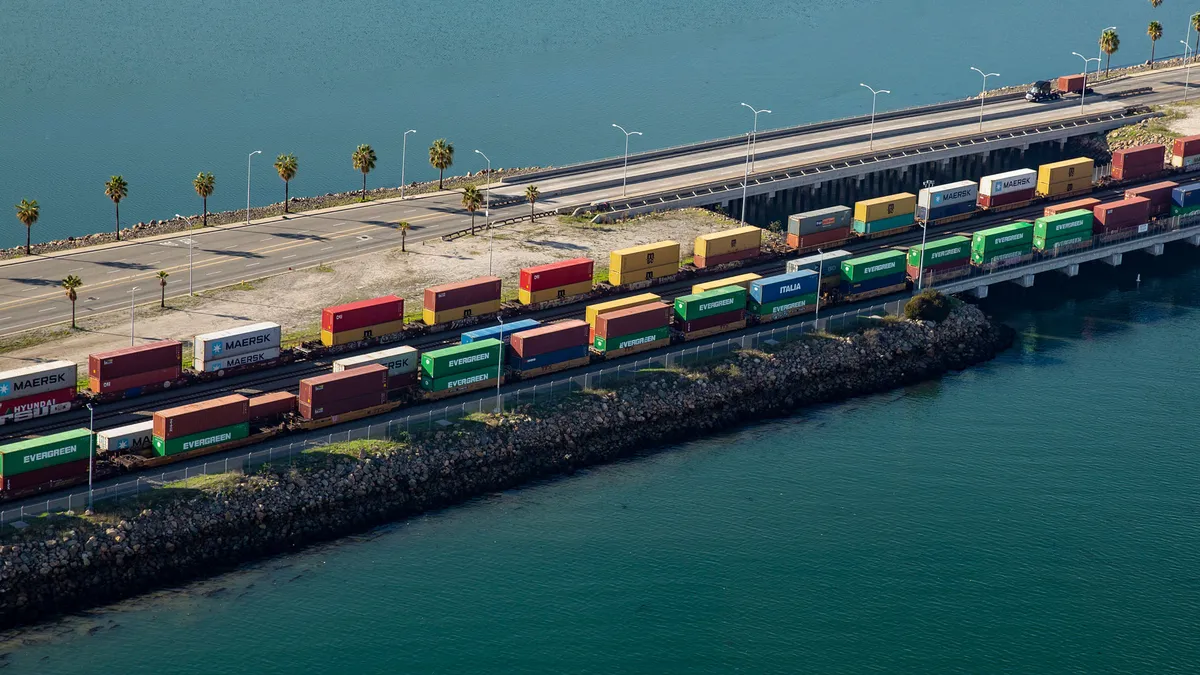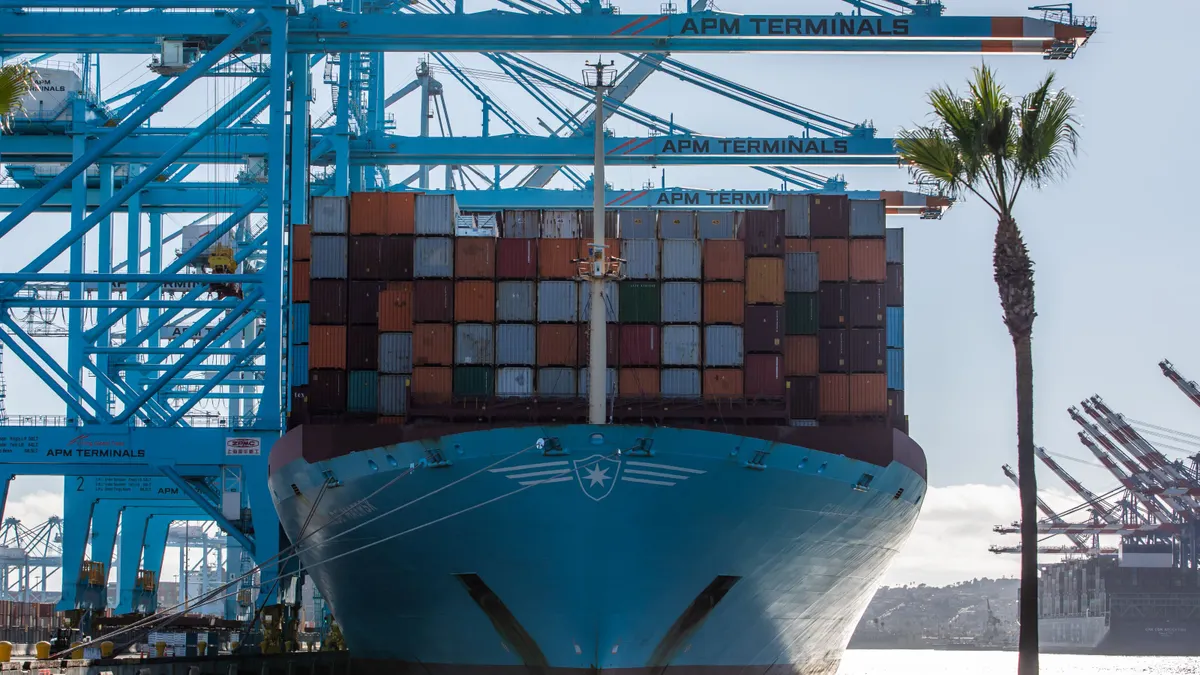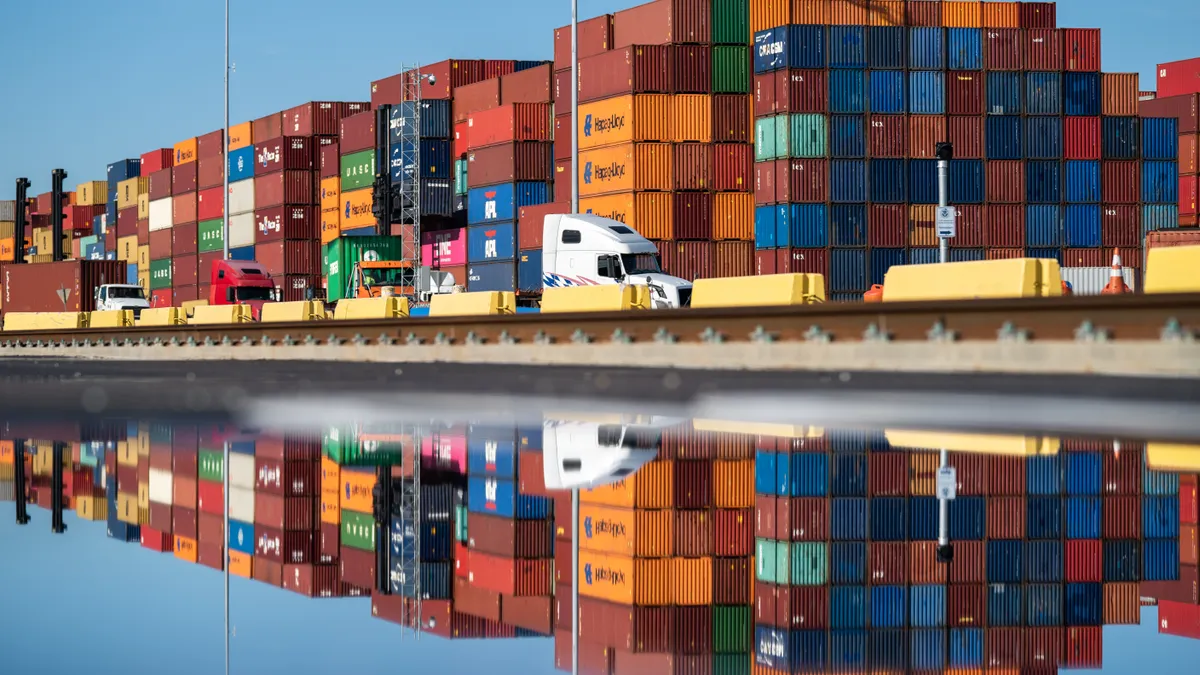This is Patent Pending. Supply chain-related patent applications are filed every week and this is where we'll talk about the ones that could have the biggest impact on the supply chain and the ones that challenge the norm. We want to give you an idea of where supply chains are heading and what the industry is thinking. Keep an eye out for this column on Fridays. Read last week's here.
Look both ways before delivery
As robot parcel carriers make their way out into the world, they'll need to understand how to get to the delivery location, how not to run into people and how to obey traffic laws. And there is one sticky situation that involves all of these variables: the crosswalk.
Amazon has already started testing the small delivery bot "Scout" in Southern California, which delivers packages to customers' homes during daylight hours on weekdays. The six-wheeled robot moves around at about the same speed as a typical pedestrian, according to Amazon. And navigating sidewalks to make deliveries, it will have to make many of the same decisions as pedestrians.
In a patent application filed this week, Amazon describes how these delivery robots could navigate different crosswalk settings — even if they're unmarked. The robot will use its onboard sensors (cameras, LiDAR, etc.) to create a confidence score for crossing the street. The score is based on the presence of vehicles and their speed, among other variables. If the score is high enough, it can cross the street on its own. But if the robot is stuck with a low score, it can send a signal to a human operator who can aid the robot in crossing the street.
The document also describes how the robot can use pedestrians to help it cross the street. The robot can "see" pedestrians with its sensors and determine if they're paying attention to the crosswalk and predict their intent to cross the street. The robot will even take the pedestrian's speed into consideration. If the person is walking at a normal pace, that's considered safer than running. These will not be the sole determinants of whether it's safe to cross the street but will help to adjust the confidence score accordingly.
Amazon is not the only company testing street-level delivery bots. FedEx began testing its "SameDay Bot" this summer, releasing a promo video that showed the robot navigating crosswalks, curbs and stairs. But safety has become a concern for these tests. The company Starship Technologies had been testing its robot on the University of Pittsburgh for food delivery when a student who uses a wheelchair complained about how the robots wait to cross the street using the curbcut, blocking it from people who might need it to navigate the streets, according to the Pittsburgh Post-Gazette. The testing on Pitt's campus has been suspended as a result of the complaint.
Read up:
It's a bird! It's a plane! It's .. a fulfillment center?
The idea for an airborne fulfillment center (AFC) is nothing new. Amazon was granted multiple patents for floating warehouses last year. The blimp-like structures carry inventory and are serviced by a fleet of delivery drones. But a patent application filed by T-Mobile this week looks to deal with one specific aspect of these yet-to-be-realized floating fulfillment centers: security.
A giant balloon filled with expensive items could become a target for bad actors, T-Mobile points out in the document. To guard against this, T-Mobile lays out a potential system for authorizing drones to access these AFCs or other remote fulfillment centers. The idea is to require the drone to use a form of two-factor authentication using virtual access credentials and physical access credentials. The AFC would send the drone a request for a virtual credential and, upon receiving it, it would match it to credentials in the system's database. If they match then it would require a physical credential. This would come in the form of a physical probe on the drone that would have pins or other protrusions to act as a "key" that would couple with a "lock" and, if they match, provide access to the fulfillment center. If the access credentials don't match, the AFC would commence a protection plan to guard against cyber or physical attacks.
As drone delivery begins across the country, one remaining question is how drones will be identified so safe drones can easily be differentiated from malicious drones. This is why one of the next regulatory challenges for the Federal Aviation Administration will be remote ID, the agency recently told Supply Chain Dive.
Read up:
-
To see the future of fulfillment at Amazon, you'll have to look up
- What is Part 135 and what does it mean for drone delivery?
Helping containers keep their cool
Poor refrigeration along the cold chain can cause a lot of problems, mainly waste of whatever item (food, pharmaceuticals, etc.) is being transported. This is why Globe Tracker filed a patent application for a system that allows users to not only track the temperature inside of a reefer container but to remotely adjust the temperature based on the readings provided by sensors embedded in the container.
Sensors inside of the container can collect the temperature data from inside and communicate this information wirelessly to a gateway attached to the container. This gateway can then communicate this data using cellular or satellite networks, or it can store the data until a network is available when it will transmit the information. If a network is available, the data can be provided in real-time and alerts can be set up for different levels. This same system would also help to identify when issues begin to arise with reefer containers.
As shipping lines invest in connected cargo containers they promise the ability to better plan for arrival times and find problem spots along the supply chain. This solution, however, would allow those issues to be found and dealt with while the cargo is still in transit.








